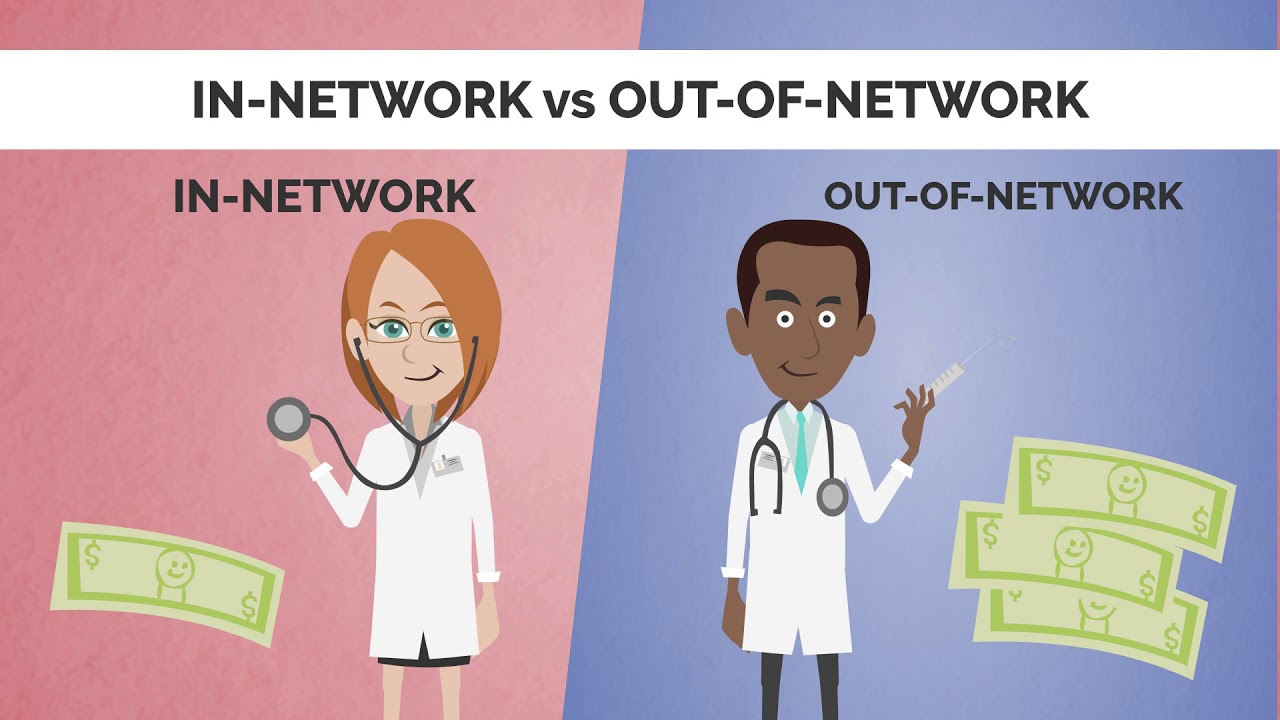health
The Growth of Integrative Medicine: Blending Approaches for Better Health

The Growth of Integrative Medicine
Integrative Medicine, a holistic approach to healthcare that combines conventional medical treatments with alternative therapies, has seen significant growth in recent years. This burgeoning field aims to treat the whole person—body, mind, and spirit—rather than just addressing symptoms. As patients and healthcare providers increasingly recognize the benefits of a more comprehensive approach to wellness, it is poised to transform the landscape of healthcare.
Understanding Integrative Medicine
Integrative Medicine is not merely a juxtaposition of conventional and alternative treatments; it is a carefully curated blend designed to optimize patient outcomes. Conventional medicine, often referred to as Western medicine, focuses on evidence-based treatments, including pharmaceuticals, surgery, and other technologically advanced interventions. Alternative medicine encompasses a wide range of practices, such as acupuncture, herbal medicine, chiropractic care, and mind-body techniques like yoga and meditation.
The core philosophy of Integrative Medicine is to harness the strengths of both conventional and alternative approaches. This synthesis aims to enhance the effectiveness of treatments, minimize side effects, and improve overall well-being. By addressing the root causes of illness and promoting preventive care, Integrative Medicine offers a more sustainable path to health.
The Rise of Integrative Medicine
Several factors have contributed to the growing popularity of Integrative Medicine. One of the most significant drivers is patient demand. As individuals become more informed about their health options, many are seeking treatments that align with their personal beliefs and preferences. The desire for a more personalized and patient-centered approach to healthcare has led many to explore this.
Additionally, there is a growing body of research supporting the efficacy of various alternative therapies. Studies have shown that practices such as acupuncture and mindfulness meditation can be effective in managing chronic pain, reducing stress, and improving mental health. This scientific validation has helped to legitimize alternative treatments and integrate them into mainstream healthcare.
Healthcare providers are also recognizing the value of Integrative Medicine. Many medical schools and training programs now include courses on alternative therapies, and hospitals and clinics are increasingly offering integrative services. This shift reflects a broader understanding that optimal health requires a multifaceted approach.

Picture by: Yandex.com
Key Components of Integrative Medicine
Integrative Medicine encompasses a wide range of treatments and practices. Some of the most commonly used modalities include:
Acupuncture
Acupuncture, a traditional Chinese medicine practice, involves the insertion of thin needles into specific points on the body to balance the flow of energy, or qi. Research has shown that acupuncture can be effective in treating conditions such as chronic pain, migraines, and anxiety.
Herbal Medicine
Herbal medicine uses plant-based remedies to treat various ailments. Herbs such as turmeric, ginger, and echinacea have been studied for their anti-inflammatory and immune-boosting properties. Herbal medicine can be used alongside conventional treatments to enhance their effectiveness and reduce side effects.
Mind-Body Practices
Mind-body practices, such as yoga, meditation, and tai chi, focus on the connection between mental and physical health. These practices have been shown to reduce stress, improve mood, and enhance overall well-being. They are often used as complementary therapies for conditions such as depression, anxiety, and chronic pain.
Nutritional Counseling
Nutrition plays a crucial role in overall health, and Integrative Medicine emphasizes the importance of a balanced diet. Nutritional counseling involves personalized dietary recommendations to support health and prevent disease. This approach can be particularly beneficial for managing conditions such as diabetes, heart disease, and obesity.
Chiropractic Care
Chiropractic care involves the manipulation of the spine and other joints to improve alignment and relieve pain. It is commonly used to treat musculoskeletal issues, such as back pain and headaches. Chiropractic care can be an effective complement to conventional treatments, particularly for patients seeking non-pharmaceutical pain relief.
Benefits of Integrative Medicine
Integrative Medicine offers several advantages over conventional approaches alone. By combining treatments, it aims to provide more comprehensive and effective care. Some of the key benefits include:
Holistic Care
Integrative Medicine treats the whole person, addressing physical, emotional, and spiritual aspects of health. This holistic approach can lead to better overall outcomes and improved quality of life.
Personalized Treatment
Integrative Medicine recognizes that each patient is unique and tailors treatments to individual needs. This personalized approach can enhance the effectiveness of care and improve patient satisfaction.
Preventive Focus
By emphasizing preventive care and lifestyle modifications, it aims to reduce the risk of chronic diseases and promote long-term health. This proactive approach can lead to better health outcomes and lower healthcare costs.
Reduced Side Effects
Combining conventional and alternative treatments can help to minimize the side effects of medications and other interventions. For example, acupuncture and herbal medicine can be used to alleviate the side effects of chemotherapy, improving the quality of life for cancer patients.
Enhanced Patient Engagement
Integrative Medicine encourages patients to take an active role in their health. By involving patients in treatment decisions and promoting self-care practices, it fosters a sense of empowerment and responsibility.
Challenges and Considerations
Despite its many benefits, Integrative Medicine also faces challenges. One of the primary obstacles is the need for more rigorous scientific research to validate the effectiveness of certain alternative therapies. While many practices have shown promise, further studies are needed to establish their efficacy and safety conclusively.
Another challenge is the integration of alternative therapies into conventional healthcare settings. This requires collaboration between different types of healthcare providers, which can be difficult to achieve. Additionally, insurance coverage for alternative treatments is often limited, making it difficult for patients to access integrative care.
Finally, there is a need for standardized training and certification for practitioners of Integrative Medicine. Ensuring that providers have the necessary skills and knowledge is crucial for maintaining the quality and safety of care.
The Future of Integrative Medicine
The future of Integrative Medicine looks promising, as more patients and healthcare providers embrace this comprehensive approach to care. Continued research and education will be essential for advancing the field and overcoming current challenges. By fostering collaboration between conventional and alternative practitioners, Integrative Medicine has the potential to revolutionize healthcare and improve patient outcomes.
As the healthcare landscape continues to evolve, Integrative Medicine offers a model for a more holistic, personalized, and preventive approach to health. By blending the best of conventional and alternative therapies, it provides a path to optimal well-being and a brighter future for patients and providers alike.
In conclusion, Integrative Medicine represents a significant shift in the way we approach health and wellness. By combining the strengths of conventional and alternative treatments, it offers a more comprehensive and effective approach to care. As the field continues to grow, it has the potential to transform healthcare and improve the lives of countless individuals.
health
Kicking the Habit: How to Quit Smoking and Drinking for Good

Are you tired of waking up with a pounding headache and feeling like you’re stuck in a fog every morning? Have you tried to quit smoking or drinking before, only to fall back into old habits? If so, don’t give up just yet! In this blog post, we’ll provide practical tips and strategies for kicking the habit once and for all. From finding support systems to changing your daily routine, we’ll help you take control of your health and say goodbye to cigarettes and alcohol for good. So grab a cup of tea (or water!) and let’s get started on your journey towards a healthier lifestyle.
How smoking and drinking affects the body
Smoking and drinking are two of the most common addictions in the world. They are also two of the most dangerous. Smoking cigarettes can lead to lung cancer, while drinking alcohol can lead to liver disease, stroke, and other serious health problems.
If you want to quit smoking or drinking for good, there are a few things you need to do. First, you need to set a goal. Then, you need to figure out what works for you. Some people find that nicotine replacement therapy (NRT) is helpful for quitting smoking. NRT includes products like patches, gum, and inhalers. Others find that cognitive behavioral therapy (CBT) is more helpful for quitting drinking. CBT helps people learn new behavioral patterns that will help them avoid relapse.
Once you have your goal and approach figured out, it’s time to start working on quitting smoking or drinking permanently. One key part of quitting is learning how to deal with cravings. When smokers experience a craving, they often reach for a cigarette or drink. To combat cravings, try using medications like varenicline (Chantix), nortriptyline (Pilocarpine), or bupropion (Wellbutrin). If those drugs don’t work well for you, consider using self-help strategies like mindfulness or CBT relapse prevention plans.
The different types of cigarettes and cigars
There are many different types of cigarettes and cigars, so it can be hard to know which one is right for you. Here are some of the most common:
Marlboro: These cigarettes are known for their smooth, creamy flavor.
Cambridge: These cigarettes have a strong tobacco flavor and are popular among smokers who want a strong nicotine kick.
Kentucky Gentleman: This cigarette has an English style tobacco blend that is milder than most other cigarettes.
Newport: Newport cigarettes are a hybrid cigarette that combines features of both Marlboro and Cambridges. They have a more pronounced tobacco taste than Cambridges, but not as much as Marlboros.
How to quit smoking using methods such as nicotine replacement therapy (NRT) or cold turkey
Quitting smoking is a difficult task, but there are many ways to help make the process easier. One popular method is nicotine replacement therapy (NRT), which involves using a nicotine pill or patch to help people quit smoking. Another method is cold turkey, which means quitting without using any nicotine whatsoever.
For those trying to quit cold turkey, experts recommend that you abstain from smoking for at least seven days before attempting to quit. During this period, it is also important to drink plenty of fluids and avoid caffeine and alcohol so that your body has enough energy to try quitting smoking on its own. If you are unsuccessful in quitting after seven days, consider seeking help from a health professional.
Why quitting smoking is important
Quitting smoking is one of the most important things you can do for your health. Smoking cigarettes can lead to a number of serious health problems, including lung cancer, heart disease, and stroke. And drinking alcohol can also be dangerous – it’s linked with liver disease, brain damage, and even death.
If you want to quit smoking or drinking for good, there are a few things you need to know. Here are three reasons why quitting is so important:
1. Quitting will Reduce Your Risk of Disease
Smoking cigarettes is associated with a number of serious health problems, including lung cancer, heart disease, and stroke. Drinking alcohol can also be deadly – it’s linked with liver disease, brain damage, and even death. Research has shown that quitting smoking or drinking can reduce your risk of these diseases by as much as 90%.
2. Quitting Will Enhance Your Quality of Life
Smoking cigarettes takes a toll on your physical and emotional well-being. Smoking has been shown to increase the risk of chronic bronchitis, emphysema, and pneumonia – all of which can seriously impair your quality of life. Drinking alcohol also has negative effects on your health – it’s associated with heart disease, liver cirrhosis, and pancreatitis. Quitting will improve both your physical and mental wellbeing by reducing the impact that these diseases have on your life overall.
Conclusion
If you are reading this, I am assuming that you want to quit smoking and drinking for good. And I can tell you from experience that it is possible – but it won’t be easy. Quitting smoking is the hardest part by far, but if you are determined enough and follow the right advice, quitting drinking will not be that much harder. If you have tried before and failed, don’t give up now. There are many people who have successfully quit smoking and drinking and made a new life for themselves – all without having to resort to medication or surgery. All it takes is dedication and hard work. So what do you need to do to start making progress? The first step is admitting that you have a problem. Once you admit that there is a problem, start looking for help. There are plenty of resources out there specifically designed to help people stop smoking and drinking – whether they are self-help books or programs offered by health clinics or hospitals. Start by finding an approach that works best for you and stick with it until the goal of quitting Smoking AND Drinking becomes reality!
health
Connection Between Emergency Contraception and STI Prevention

Are you aware that taking emergency contraception can not just prevent unwanted pregnancies, but also reduce the risk of sexually transmitted infections (STIs)? That’s right! Emergency contraception is a game-changer when it comes to sexual health. In this blog post, we’ll explore the surprising connection between emergency contraception and STI prevention – how it works, its effectiveness, and everything you need to know about using it for safer sex. So buckle up and let’s dive into this fascinating topic!
What is emergency contraception?
Emergency contraception is a method of birth control that can be used after unprotected sex or failed contraception. Emergency contraception is not as effective as regular contraception, but it can help prevent pregnancy if used within a few days of unprotected sex.
There are two types of emergency contraception: the emergency contraceptive pill (ECP) and the copper intrauterine device (IUD). The ECP contains hormones that prevent ovulation or fertilization, while the copper IUD prevents implantation of a fertilized egg.
Emergency contraception is more effective when used as soon as possible after unprotected sex, but it can still be effective up to five days afterwards. The ECP is most effective when taken within 72 hours, while the copper IUD can be inserted up to five days after unprotected sex.
Emergency contraception can help reduce the risk of pregnancy, but it will not protect against sexually transmitted infections (STIs). To reduce the risk of STIs, use condoms every time you have sex.
How does emergency contraception prevent STIs?
Emergency contraception is often used as a way to prevent pregnancy after unprotected sex, but it can also be used to help prevent the spread of STIs. When used correctly, emergency contraception can help reduce the risk of STI transmission by up to 89%.
There are two main types of emergency contraception: the pill and the copper IUD. The pill works by delaying ovulation, which prevents fertilization from occurring. The copper IUD works by preventing implantation of a fertilized egg in the uterus.
Both of these methods are highly effective at preventing pregnancy, but they also have the added benefit of helping to prevent STI transmission. This is because they work to prevent fertilization from occurring, which is when STIs are typically transmitted.
If you are concerned about the possibility of contracting an STI, using emergency contraception can be a good way to help reduce your risk. It is important to remember that emergency contraception should not be used as a regular method of birth control, and it is always best to practice safe sex to avoid the spread of STIs.
The different types of emergency contraception
There are two main types of emergency contraception: the copper IUD and the morning-after pill. The copper IUD can be inserted up to 5 days after unprotected sex, and it works by preventing fertilization. The morning-after pill is a high dose of regular birth control pills, and it must be taken within 3 days of unprotected sex. It works by delaying ovulation.
Emergency contraception is a safe and effective way to prevent pregnancy after unprotected sex. However, it is not as effective as regular birth control, so it should not be used as a regular method of contraception. Emergency contraception should also not be used as a way to prevent STIs.
Pros and cons of emergency contraception
When it comes to emergency contraception, there are pros and cons to consider. First, the pro: emergency contraception can help prevent pregnancy if taken within a few days of unprotected sex. The morning-after pill is most effective when taken within 24 hours of unprotected sex, while the copper IUD can be used up to five days after unprotected sex.
Now for the cons: first, emergency contraception is not 100% effective. It may reduce the risk of pregnancy, but it does not eliminate it completely. Second, emergency contraception can be expensive. The morning-after pill can cost up to $50, while the copper IUD can cost upwards of $1,000. Finally, some people may experience side effects from emergency contraception, such as nausea and vomiting.
So, what’s the verdict? Emergency contraception can be a useful tool for preventing pregnancy, but it’s not perfect. If you think you might need emergency contraception, talk to your doctor or healthcare provider about your options and whether it’s right for you.
How to use emergency contraception correctly
It is estimated that over 25% of sexually active women will experience an unplanned pregnancy in their lifetime, making emergency contraception (EC) an important tool for preventing unintended pregnancies. EC can be used to prevent pregnancy up to 5 days after unprotected sex, but it is most effective when used within 24 hours.
There are two types of EC available in the United States: the morning-after pill and the copper IUD. The morning-after pill contains a high dose of the hormone progestin, which prevents ovulation or fertilization. The copper IUD works by inhibiting sperm motility and preventing implantation.
The morning-after pill is available over-the-counter without a prescription for women aged 17 and older, while the copper IUD must be prescribed by a healthcare provider. Both types of EC are highly effective at preventing pregnancy, with failure rates of less than 1%.
In addition to preventing unintended pregnancies, EC can also reduce the risk of sexually transmitted infections (STIs). STIs are more common among women who have unprotected sex, as they are more likely to be exposed to infected bodily fluids. EC can help reduce the risk of STIs by preventing ovulation or fertilization, which reduces the chance that infected sperm will come into contact with the cervix.
EC is a safe and effective way to prevent unintended pregnancy and reduce the risk of STIs. However, it is important to remember that EC is not 100% effective and
Conclusion
In conclusion, there is a surprising connection between emergency contraception and S.T.I. prevention that can help to reduce the spread of diseases and infections around the world. By encouraging more people to use reliable protection such as condoms while also providing access to emergency contraception when needed, we can work together to improve our sexual health outcomes and protect ourselves from unwanted pregnancies in the process. If you think you may need emergency contraception or have any questions about it, be sure to consult with your doctor for more information!
health
In‑Network vs Out‑of‑Network: Cut Health Care Costs

Introduction
Health insurance can be a confusing and overwhelming topic, especially when it comes to understanding the difference between in-network and out-of-network health care providers. Choosing the right provider can have a significant impact on your health and finances, so it’s essential to know what each option entails. In this blog post, we’ll explore the differences between in-network and out-of-network providers, their advantages and disadvantages, and how you can make informed decisions that maximize your health insurance options. So let’s dive into this vital topic!
What is an In-Network Provider?

Image by: Yandex.com
When it comes to health insurance, there are two types of providers: in-network and out-of-network. In this section, we’ll focus on what an in-network provider is.
An in-network provider is a healthcare professional or facility that has contracted with your insurance company to provide services at a discounted rate. This means that if you receive care from an in-network provider, you will usually pay less out of pocket than if you go to an out-of-network provider.
Insurance companies negotiate rates with in-network providers to keep costs down for their customers. These negotiated rates can vary from one provider to another and can change over time, so it’s important to check with your insurance company before receiving care.
In addition to cost savings, using an in-network provider often means simpler billing processes as the claims are submitted directly by the healthcare professional or facility. It also ensures that your treatment plan aligns with the guidelines set by your insurance company.
Choosing an in-network provider can be beneficial for both your wallet and peace of mind knowing that you’re receiving quality care within the parameters set by your health insurance policy.
What is an Out-of-Network Provider?
An out-of-network provider is a healthcare professional or facility that does not have a contract with your insurance company. This means that if you choose to receive medical care from an out-of-network provider, you may be responsible for more of the cost of your care than if you had seen an in-network provider.
Out-of-network providers can include doctors, hospitals, labs, and other types of healthcare professionals. When you receive services from these providers, they will bill your insurance company for their services at their own rates. Your insurance company may cover part of these costs but usually only up to a certain limit or percentage.
It’s important to note that some health plans do not cover any out-of-network care except in emergencies. Other health plans may offer some coverage for out-of-network care but at a higher cost-sharing amount compared to in-network care.
Before scheduling an appointment with an out-of-network provider, it’s essential to check with your insurance plan about what expenses are covered and how much it will cost you. Knowing this information beforehand can help avoid unexpected bills and financial stress down the line.
Pros and Cons of Out-of-Network Providers

Image by: Yandex.com
Out-of-network providers can give you more options when it comes to choosing a health care provider. One advantage is that you may be able to get access to specialized services or treatments that your in-network provider cannot offer.
However, out-of-network providers often come with higher costs. You may have to pay more for the same service than you would with an in-network provider because your insurance company will not cover as much of the cost. In some cases, they may not cover any of the expenses at all.
Another downside is that out-of-network providers do not have contracts with your insurance company which means that they are not obligated to follow specific pricing guidelines. This could lead to surprise bills and unexpected charges from certain medical procedures.
It’s important also to note that while some insurance plans allow for limited coverage outside of their network, others don’t provide any benefits whatsoever if you go outside their pre-approved list of doctors and hospitals.
While there are certainly advantages associated with out-of-network providers, these should always be weighed against potential drawbacks such as increased costs and lack of coverage from the insurer before making a decision about where you receive healthcare treatment.
Conclusion
Understanding the difference between in-network and out-of-network providers is crucial to maximizing your health insurance benefits. While in-network providers can offer more affordable care and better coverage, sometimes you may have no choice but to seek services from an out-of-network provider.
When it comes to choosing a healthcare provider, make sure you do your research ahead of time. Check with your insurance company to see which doctors are covered under your plan and what costs will be associated with seeing an out-of-network provider.
Remember that ultimately, the decision is yours. You should choose a healthcare provider based on their qualifications, experience, and compatibility with your medical needs. By staying informed about your options and making educated decisions, you can ensure that you get quality care while also keeping costs down.
-
Business2 years ago
Cybersecurity Consulting Company SequelNet Provides Critical IT Support Services to Medical Billing Firm, Medical Optimum
-
Business2 years ago
Team Communication Software Transforms Operations at Finance Innovate
-
Business2 years ago
Project Management Tool Transforms Long Island Business
-
Business2 years ago
How Alleviate Poverty Utilized IPPBX’s All-in-One Solution to Transform Lives in New York City
-
health2 years ago
Breast Cancer: The Imperative Role of Mammograms in Screening and Early Detection
-
Sports2 years ago
Unstoppable Collaboration: D.C.’s Citi Open and Silicon Valley Classic Unite to Propel Women’s Tennis to New Heights
-
Art /Entertainment2 years ago
Embracing Renewal: Sizdabedar Celebrations Unite Iranians in New York’s Eisenhower Park
-
Finance2 years ago
The Benefits of Starting a Side Hustle for Financial Freedom









































